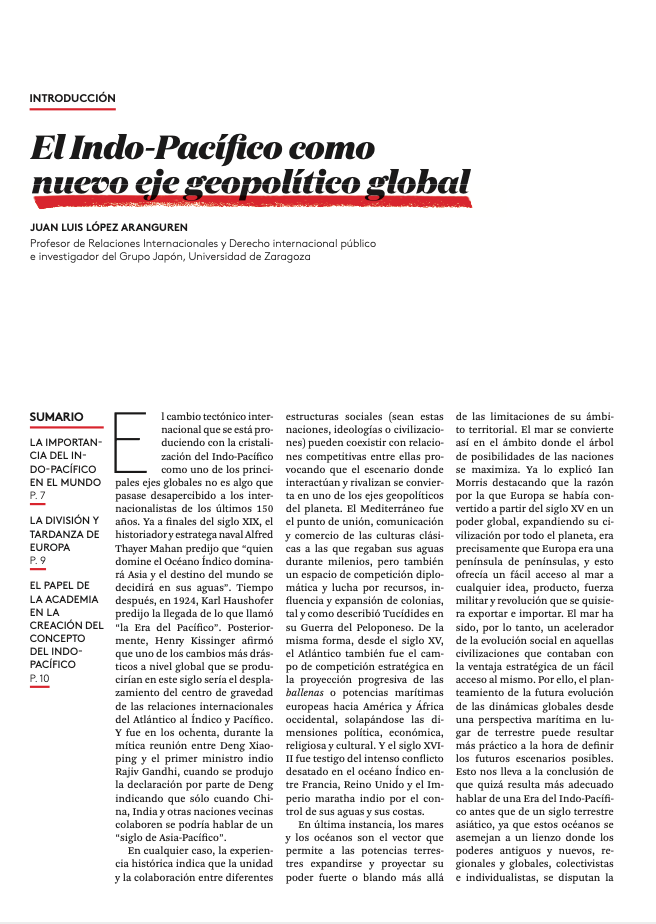
Map of the skill area of the U.S. Pentagon's Indo-Pacific Command [USINDOPACOM].
JOURNAL / Juan Luis López Aranguren
 [6-page document. PDF download ].
[6-page document. PDF download ].
INTRODUCTION
The international tectonic shift that is taking place with the crystallization of the Indo-Pacific as a major global axis is not lost on the internationalists of the last 150 years. Already at the end of the 19th century, the naval historian and strategist Alfred Thayer Mahan predicted that "whoever dominates the Indian Ocean will dominate Asia and the fate of the world will be decided in its waters". Some time later, in 1924, Karl Haushofer predicted the coming of what he called "the Pacific Age." Later, Henry Kissinger asserted that one of the most dramatic global changes to occur in this century would be the shift of the center of gravity of international relations from the Atlantic to the Indian and Pacific Oceans. And it was in the 1980s, during the legendary meeting between Deng Xiaoping and Indian Prime Minister Rajiv Gandhi, that Deng declared that only when China, India and other neighboring nations cooperated could we speak of an "Asia-Pacific century".
In any case, historical experience indicates that unity and partnership between different social Structures (be they nations, ideologies or civilizations) can coexist with competitive relations between them, causing the scenario where they interact and compete to become one of the geopolitical axes of the planet. The Mediterranean was the point of union, communication and trade of the classical cultures to which its waters irrigated for millennia, but also a space of diplomatic competition and struggle for resources, influence and expansion of colonies, as described by Thucydides in his Peloponnesian War. Similarly, since the 15th century, the Atlantic was also the field of strategic competition in the progressive projection of the European whales or maritime powers towards America and West Africa, overlapping the political, economic, religious and cultural dimensions. And the 18th century witnessed the intense conflict in the Indian Ocean between France, the United Kingdom and the Indian Maratha Empire for the control of its waters and coasts.
In the last written request, the seas and oceans are the vector that allows terrestrial powers to expand and project their strong or soft power beyond the limitations of their territorial scope. The sea thus becomes the realm where the tree of possibilities of nations is maximized. Ian Morris already explained this by pointing out that the reason why Europe had become a global power from the 15th century onwards, expanding its civilization all over the planet, was precisely that Europe was a peninsula of peninsulas, and this offered easy access to the sea for any idea, product, military force and revolution to be exported and imported. The sea has been, therefore, an accelerator of social evolution in those civilizations that had the strategic advantage of easy access to it. Therefore, approaching the future evolution of global dynamics from a maritime rather than a terrestrial perspective may be more practical in defining possible future scenarios. This leads us to the conclusion that it is perhaps more appropriate to speak of an Indo-Pacific Era rather than an Asian land century, as these oceans resemble a canvas where old and new, regional and global, collectivist and individualist, powers vie for the projection of their interests, spheres of influence and identities to global reach.